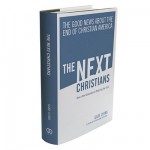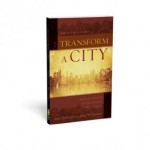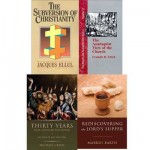Review of Soar by Kenny Luck
Kenny Luck’s book Soar was not what I expected. It is subtitled “Are you ready to accept God’s power?” I knew it was about the Holy Spirit. However, I did not realize that it was intended for men’s accountability groups or such.
Because of the intended audience (I guess), the book did not meet my expectations. Perhaps I did not look into the purpose of the book enough before I requested it.
Luck divides his book into three parts: 1) Transitions, 2) Transformations, and 3) Transactions. Within those three sections, there are seventeen short chapters. Most chapters begin with a story or object lesson, then connect to a verse or portion of a verse to reinforce the story/lesson.
For example, in one chapter, a surprise Christmas gift is compared to the “surprise” gift of the Holy Spirit. The Holy Spirit is called a surprise because Peter mention the Holy Spirit at the end of Acts 2:38. Of course, this fails to recognize that Peter’s entire speech in Acts 2 is to explain that the Holy Spirit has come as promised by God (so he isn’t a surprise).
Other chapters follow a similar format. The author does not try to develop a specific understanding of who the Spirit is or how the Spirit works, but instead offers simple (sometimes too simple) stories.
However, there is a discussion guide at the end of this book that could make it beneficial for a group of believers (small group, accountability group, etc.). I say “could” because the group would have to go beyond what is presented in the book.
(I received this book for free from WaterBrook Multnomah Publishing Group for this review as part of their Blogging for Books program.)
(Please consider rating my review below or at the WaterBrook Multnomah site here.)
Because the resurrection of Jesus Christ matters
In The Jesus Inquest, Charles Foster presents “the case for and against the resurrection of the Christ.”
The publisher describes this book as “an unbiased examination, and compelling courtroom presentation, revealing the undeniable facts of the death and resurrection of Jesus Christ.” The author admits (and most readers understand) that there is no unbiased examination of anything. Foster approaches this story as a Christian, and he knows that many unbelievers will discount his arguments because of that perspective. However, he does attempt to present the evidence for and against the resurrection in a manner that is as unbiased as possible.
Foster divides his book into eight chapters. He begins by discussing the importance of the resurrection and by laying out the sources used in his examination. Then, he examines the death of Jesus, the burial of Jesus, the empty tomb, and the post-resurrection appearances. In the final two chapters, he answers the questions “Did the early church believe in the bodily resurrection of Jesus?” and “Where did the Christians get their idea for resurrection.”
Furthermore, Foster includes four helpful appendices: 1) The cause of death, 2) the Turin shroud, 3) the “Jesus Family Tomb” statistics, and 4) the Gospel of Peter.
The main chapters are divided into two parts, each presented by a fictional lawyer. Lawyer X presents the case against the resurrection of Jesus Christ, while Lawyer Y presents the care for the resurrection.
Foster’s aim is to present the best arguments against the resurrection in a manner that unbelievers will appreciate and to present the best arguments for the resurrection in a manner that believers will appreciate. He does not attempt to rely on scholarly experts (a la Strobel), but instead delivers the evidence as he says a lawyer would deliver it in court.
First, I admit that I started reading this book with a bias as well – primarily, a bias against this type of book. But, I was pleasantly surprised. While I do not believe that this type of argumentation can convince anyone to become a Christian (which is the work of God), I do believe that it can be helpful.
As a Christian, I think there are some better arguments for the resurrection than some of those presented in the book. So, I assume that there are also better arguments against the resurrection than those presented in the book. However, I do think the author succeeded in being as fair as possible.
I believe this book can best benefit those who are disciples of Jesus Christ but who are struggling with answering friends, neighbors, or family members who are unbelievers or skeptics.
(I received a free copy of The Jesus Inquest from BookSneeze.com in exchange for an honest review.)
Next Blogging for Books Request: Soar
Because of travels, sickness, other books to read/review, and other more important matters, there was a long delay (over a month) between my review of Mere Churchianity and my review of The Next Christians. But, now that I’ve published that last review, I’m ready to request another book from Blogging for Books. This will be the fourth book that I’ve requested from them.
I’m still impressed with this program overall. However, I noticed that there have not been many (if any) books added to those available for request and review in the two month that I’ve been enrolled in this program. I hope they add more books soon.
So, I’ve decided to request the book Soar: Are You Ready to Accept God’s Power? by Kenny Luck.
I’m not sure what to expect from this book. I’ve never heard of the book or the author. I picked this one because of the subject matter: the Holy Spirit. (Perhaps this will prompt me to continue my series on the Holy Spirit…)
Have you read or heard of this book?
The New Normal: a description or exhortation?
In The Next Christians: The Good News About the End of Christian America (with a second subtitle: How a new generation is restoring the faith), Gabe Lyons says that he is attempting to describe the new Christians landscape in America following the fall of Christendom. In fact, his book reads as both a description of a “new normal” for Christianity as well as a challenge and exhortation for others to join these new (“next”) Christians.
Lyons divides his book into three sections: Part I) The World is Changing, Part II) The Restorers, and Part III) A New Era.
In Part I, the author describes how Christianity in America is changing. He describes past Christian America in two categories: the Separatists (Insiders, Culture Warriors, and Evangelizers) and the Cultural (Blenders and Philanthropists). Among and between these two categories, Lyons sees another breed of Christians rising up, a group that he labels “The Restorers.” Primarily, he says this group is “restoring” the ideas of creation and restoration to the typical gospel story which has usually only included fall and redemption.
In Part II, Lyons uses both story and exhortation to help describe/define “the restorers” by comparing and contrasting their values with some of the values from the previous generations of Christians. For example, the chapters within this section are called “Provoked, Not Offended,” “Creators, Not Critics,” “Called, Not Employed,” “Grounded, Not Distracted,” “In Community, Not Alone,” and “Countercultural, Not ‘Relevant.'”
The final section, Part III, contains only one chapter titled “The Next Big Shift.” Within this chapter, the author includes a discussion of “First Things” and “Second Things.” Lyons says:
“The First Thing for the Christian is to recover the Gospel – to relearn and fall in love again with that historic, beautiful, redemptive, faithful, demanding, reconciling, all-powerful, restorative, atoning, grace-abounding, soul-quenching, spiritually fulfilling good news of God’s love. As described throughout the earlier chapters of this book, it is critical that this come first.” (pg 192)
Accordingly, he continues, “Second Things” result from beginning with the proper “First Thing.”
In a book such as this, categorization and labeling are necessary. The author is painting with broad strokes, and thus must make broad generalization. This can be both helpful and hurtful. It is helpful because we can see both ourselves and others in these categories, and, hopefully, understand one another’s perspective a little clearer. Categorization can be hurtful because very few actually fall neatly within the categories. Thus, it is easy to label and discount someone without considering their point of view or history.
For example, I think that Lyon’s “Next Christians” are primarily passing through the two categories (Separatists and Cultural) and five sub-categories (Insiders, Culture Warriors, Evangelizers, Blenders and Philanthropists) that he described. Thus, even different groups of “Next Christians” make not recognize their common traits because their trajectory (path of change) is coming from different starting points.
However, the fact that Lyons ended with a focus on the gospel of Jesus Christ as the First Thing is a huge positive in my view. If Christians can actually remember that the gospel is First (and everything else comes far behind), then the labels and categories become much less important. It is when we begin to major on the “Second Things” that the church runs into trouble and continues the division and separation that we’ve seen from the early days of Christianity.
Finally, as I mentioned earlier, Lyons presents his books as a description of what he and his group has seen developing in Christianity in recent years. Much of the book reads as a description. In fact, the author presents many stories to illustrate his points. (At times, the descriptions and stories can almost seem monotonous, but only almost.) However, occasionally, the book reads more as a manifesto, calling others to live as “Next Christians” also. (I’m not saying that this is a bad thing; I’m simply pointing it out.)
I would recommend The Next Christians, especially to two groups of Christians. If you consider yourself one of “The Next Christians,” this book will be an encouragement and a challenge for you to live for Christ focusing on the gospel. If you do not consider yourself a “Next Christian,” and perhaps even wonder why so many people are changing a good thing, this book will help you see these new Christians from their perspective.
(I received this book for free from WaterBrook Multnomah Publishing Group for this review as part of their Blogging for Books program.)
(Please consider rating my review below or at the WaterBrook Multnomah site here.)
Provoked or Offended?
In his book The Next Christians, Gabe Lyons describes a new generation of Jesus followers in the United States (a generation that he called the “new normal” or “the restorers”). (My review of this book will be posted tomorrow.)
In the second part of his book – Part II) The Restorers – Lyons compares and contrasts (generally) this new generation of Christians with those who have come before in the previous generation or two (especially).
For example, he says that “the restorers” are provoked by the world’s culture when previous Christians may have been offended.
Lyons writes:
No one – Christians included – can avoid all contact with potentially corrupting people, systems, perspectives, and influences. For everyday followers of Jesus, this tension begs the question: How should Christians react when placed in an environment that celebrates sin, overlooks injustice, or tolerates immorality?
Michael Metzger has said, “When confronted with the corruption of our world, Christians ought to be provoked to engage, not offended and withdrawn.”
In contrast, classic Separatists Christians (the insiders, culture warriors, and evangelizers) are often offended by corruption. Characterized by their lifestyle choices, these Christians tend to remove themselves from potentially harmful situations – citing their disgust of immorality or their pursuit of holiness as the reason…
This approach does little to transform our existing culture or further the mission of God in our world.
When a community is provoked, they assume a proactive posture; when a community is offended, they assume a reactive posture. (page 75)
Do you agree that there is a difference between being provoked by culture instead of being offended at culture? Which posture (provoked to be proactive or offended to be reactive) helps a community best further the mission of God in our world?
Review of To Transform a City
Zondervan sent me a free, review copy of To Transform a City: Whole Church, Whole Gospel, Whole City by Eric Swanson and Sam Williams as part of a blog tour that is taking place this week.
According to the authors, the world will be transformed when the cities are transformed, and the cities will be transformed when all believers in those cities work together to see their neighbors, coworkers, friends, and family transformed by the gospel of Jesus Christ. The authors sprinkle their chapters with examples and case studies from cities throughout history and around the world.
In fact, one of the important aspects of this book is the fact that the authors have worked with Christian leaders from around the world. Thus, their perspective is broad and general, not limited to a specific city and context.
What do the authors mean by “transformation”? They explain the process of transformation as follows:
1. Transformation begins with one person who is yielded to the Spirit of God.
2. Proclamation comes through proclamation and demonstration of the gospel.
3. Transformation begins as people are transformed.
4. Transformed people want to transform their communities.
5. Transformation occurs when the work is taken over by others.
6. Transformation is recognized by how the city identifies your role. (53-55)
The positive aspects of this book is found in the insistence that the church (i.e., all “local churches”) must work together and that the focus must be the kingdom of God (i.e., not the “local church”).
However, there are a few negatives. To the authors, churches working together seem to consist of church leaders working together. Also, I’m not convinced that there is as strong a focus on the cities in Scripture as the authors indicate. There are many instances of God working in villages or God sending people to small towns or even into the desert or wilderness.
Overall, though, this book presents several concepts that are important for all believers to understand. When believers work together with brothers and sisters in their neighborhood (whether they are part of the same “local church” or not), then their neighborhood will be transformed. The same could be said for workplaces, schools, etc. They do not have to wait for church leaders to organize projects. They can start working together right now.
I recommend this book to followers of Jesus Christ who are interested in this type of unity and cooperation for the sake of the kingdom of God – whether that brother or sister lives in a city or town or village.
The Whole Church = All Church Leaders?
I’m reading the book To Transform a City by Eric Swanson and Sam Williams as part of a “blog tour” sponsored by Zondervan.
The book, as the title suggests, encourages churches in a city to work together in order to “transform” their city. I agree with many things in this book (as I will write about in a later review), and I think the author’s points about the kingdom being bigger than any particular localized and organized group of believers is a very important lesson for today’s church to learn and practice.
There is one point in this book that is causing me to struggle. Throughout the book, the authors call for churches to work together. In fact, one of the chapters is named “The Whole Church.” In that chapter, the authors point out that God sees the entire church in a city as a single church, even if they meet in various locations and at different times. They call for these different churches to put aside their differences and seek to serve others in their city in the name of Jesus.
But, this is where I’m concerned. In every example (unless I missed one), the authors describe church leaders (primarily “senior pastors”) getting together in order to work together. But, senior pastors are not the church in a city any more than a single localized, organized group of believers (local church) is the church in a city.
Why must we limit “working together” to pastors and other leaders?
Why not encourage all believers in the city to work together?
Instead of groups of pastors coming up with ideas to help the community, why not include the people that are actually in the community?
Encourage neighbors to work with other neighbors (who are part of different churches) in order to transform their neighborhoods. Encourage employees to work with other employees (who are part of different churches) in order to transform the people in their work places. Encourage students to work with other students (who are part of different churches) in order to transform other students in their schools.
I’ve noticed something similar in other books on this subject. Cooperation between local churches is almost always focused on pastors and other leaders working together. Then, each pastor/leader gets his or her people involved (if the pastor/leader so chooses).
It’s almost as if we do not trust the people to work together themselves. Perhaps there’s another reason that I’m missing.
What do you think?
Four Books
As I mentioned in my post “Book Suggestions?” I was given a couple of Amazon.com gift cards for Christmas. After looking through the books suggested by you, and looking through my own wish list, I decide on the following books (in no particular order, and including a short blurb from the publisher):
- The Subversion of Christianity by Jacques Ellul
Pointing to the many contradictions between the Bible and the practice of the church, Jacques Ellul asserts in this provocative and stimulating book that what we today call Christianity is actually far removed from the revelation of God. Successive generations have reinterpreted Scripture and modeled it after their own cultures, thus moving society further from the truth of the original gospel.
- The Annabaptist View of the Church: A Study in the Origins of Sectarian Protestantism by Franklin H. Littell
(No additional information was available. Littell is also the author of The Reformers and Their Stepchildren.)
- Thirty Years That Changed the World: The Book of Acts for Today by Michael Greene
While there are many studies and commentaries on the book of Acts, few focus on the amazing achievement of the people found within its narrative. The first Christians chronicled in Acts turned the world upside down in the space of a generation. In this book Michael Green opens up the gripping story of Acts, highlighting the volcanic eruption of faith described there and comparing it to the often halfhearted Christianity of the modern Western world.
- Rediscovering the Lord’s Supper: Communion with Israel, with Christ, and Among the Guests by Markus Barth
Following his father’s classic work CHURCH DOGMATICS, Markus Barth considered the doctrine of the Lord’s Supper, which, had not received a full treatment. His work resulted in an exegesis of the Lord’s Supper texts in the Synoptics, the Fourth Gospel, and the Pauline letters. His perspective sees the Lord’s supper and its accompanying Agape meal as a symbolic event that allows God’s people to commune in an atmosphere that remains open to all, including the Jews, whose Passover continues to shed light on this sacrament.
Have you read any of these books?
Cullmann: Edification, the Body of Christ, and Christ Himself
In my previous post “Cullmann on ‘The Aim of the Service,'” I quoted Oscar Cullmann’s book Early Christian Worship (London: SCM Press, 1953). In that book, Cullmann concludes that there are many, many different activities that happened when the church met together. He also concludes that the “aim” (purpose) of that gathering is edification (or “building up”).
Cullmann points out that the only limitation that Paul places on the wealth of activities that might happen when the church meets is the filter of edification.
Now, a few pages later, I come across another section of Cullmann’s book in which he discusses the work of edification in the church gathering. Cullmann connect edification with the formation of the body of Christ and the presence of Christ himself when the church meets:
First, what is the specifically Christian aim of the gathering for worship? The occasions serve for the ‘building up’ of the community as the Body of Christ, the spiritual body of the risen Lord. The Church as the body of this Christ must take shape in the gatherings of the community. The Church is built up in virtue of its coming together. But because the Church, which is thus built up, is the spiritual body of the risen Christ himself, we can also say that Christ is shown forth in the gathering of the community: where two or three are gathered in Christ’s name, there is Christ in the midst of them, indeed, in such a way that he takes form in the gathering itself. Everything which furthers a ‘building up’, so understood, and only this, belongs to the Christian service of worship. This aim purifies the Christian service of those elements which serve only to satisfy profane, egocentric human needs, but at the same time excludes all excessive enthusiasm which would empty the service in its attempt to purify. The purpose of building up the Church as the body of Christ is served by all the different parts we have identified in the early Christian gatherings: breaking of bread, reading, proclamation, confession, prayer, doxology, blessing, hymns in liturgical and free form; prophecies, speaking with tongues and interpretation of tongues subjected to examination. (pages 33-34)
What do you think of Cullmann’s discussion?
Cullmann on “The Aim of the Service”
In my study of the early church (between the time of the apostles to the middle ages), I’ve started reading Oscar Cullmann’s classic Early Christian Worship (London: SCM Press, 1953).
So far, Cullmann continues to call the church gathering by the term “worship” or the phrase “service of worship.” You’ll see the terms used below.
But, pay close attention to what Cullmann says about the “aim” of this “service of worship”:
The Aim of the Service
We are now familiar with the various elements of the service of worship in early Christianity. They are extraordinarily numerous, and it is astonishing how many forms the life of worship in these first Christian communities has assumed. In the light of this wealth of form, we must assert here and now that the services of worship in the Protestant Churches of our own era are very much poorer, not only in respect of the free working of the Spirit, but also in respect of what is liturgical and especially in respect of what is aimed at in the gatherings of the community. The aim is constantly described by Paul as building up of the community (1 Cor. 14). We must not interpret this word in the hackneyed pietist sense of ‘uplift’, but we have to think of the figure of the body of Christ, which must be formed effectually in the community. All the different elements which we have examined individually are subordinated to this purpose, which attains its peak in the ‘coming of Christ’ in the Lord’s Supper. To this aim is due the wealth and the variety of the elements in the early Christian service. But, on the other hand, in view of this aim their use is constantly brought under examination and, if necessary, limited. Paul has also seen this second necessity; he has recognized the danger of this wealth, but he has not thrown out the baby with the bath water. On the contrary, he has preserved everything which can contribute to the ‘building up’ of the body of Christ. (pg. 26)
What do you think of Cullmann’s statement?







